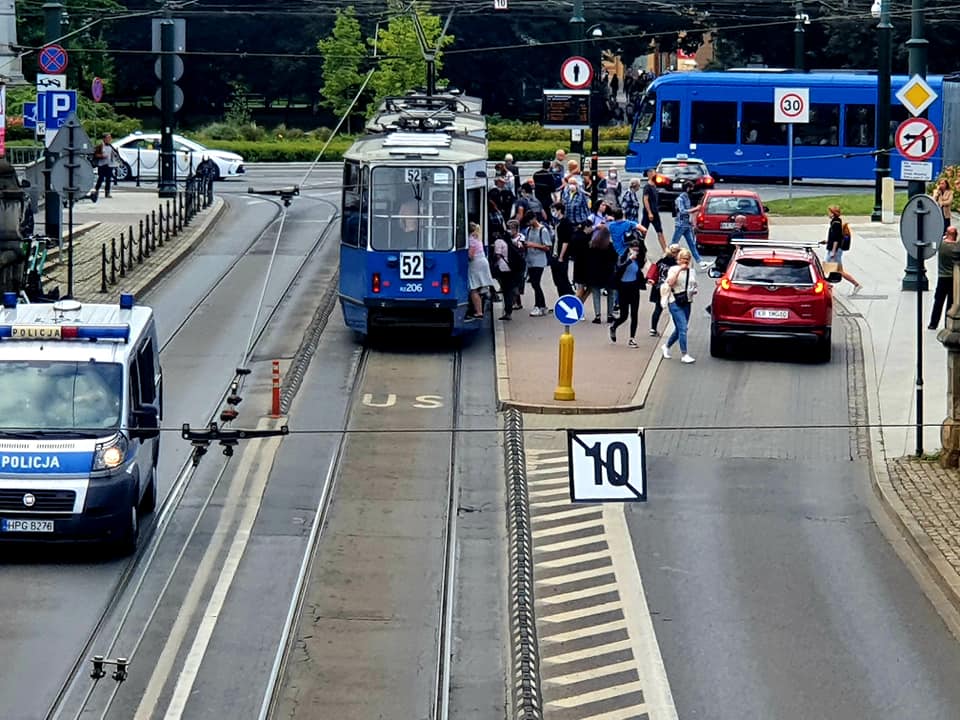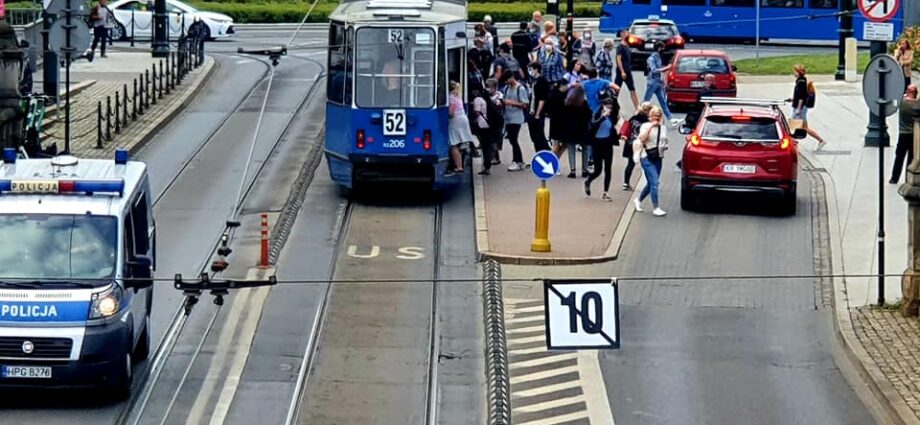One of the many things that has surprised me about Kraków is the mobility profile here. I was aware of recent modal share data – a graph from 2018 by Civitas.eu shows the city’s modal share as:
39,5% CAR
29,7 % PUBLIC TRANSIT
22,8% WALKING
6,9% BIKE
1,1% OTHER
However, I was not expecting the intensity of automobile traffic here and road design that is often reminiscent of car-centric US American cities I have grown up and lived in.
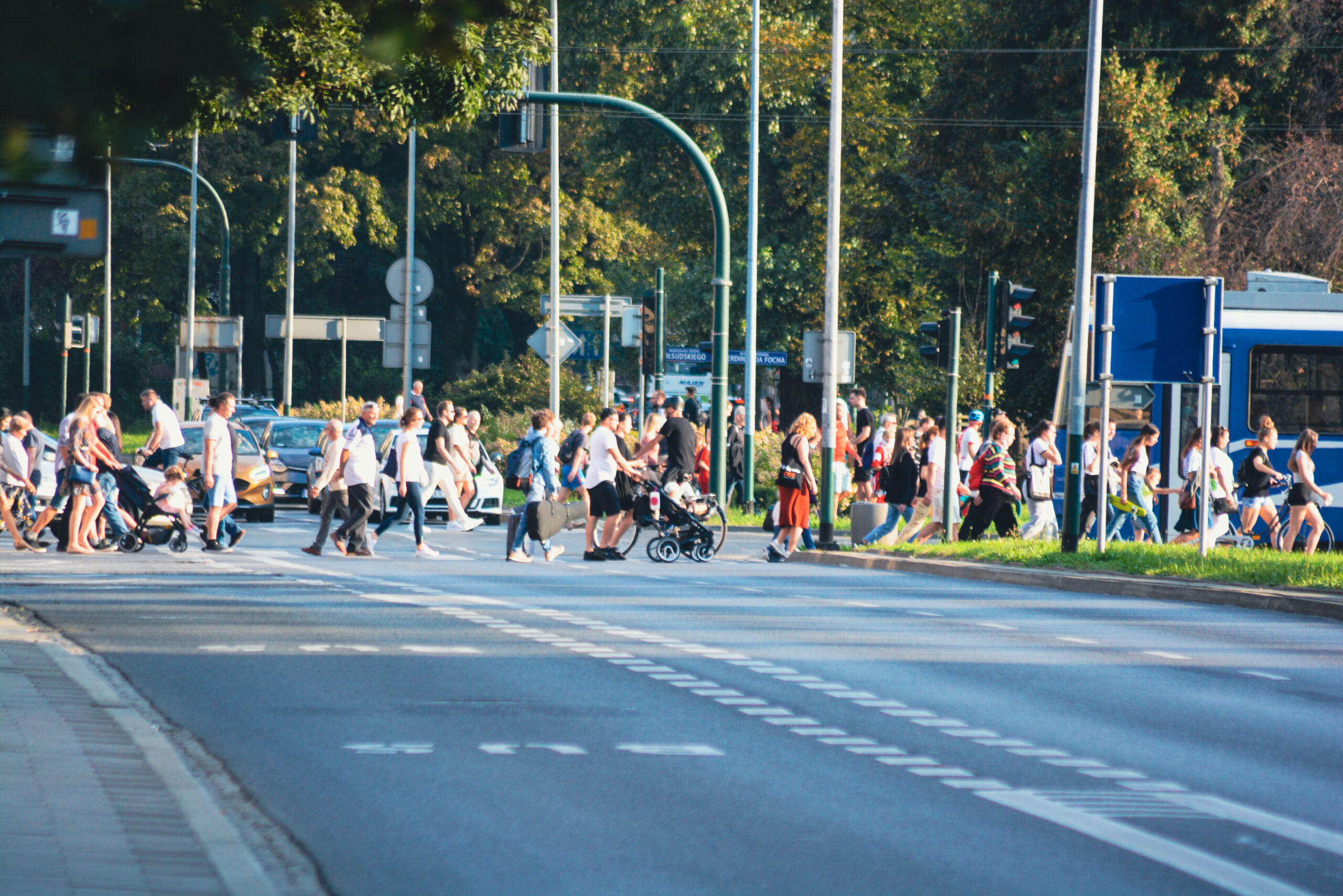
However, parallel to this car-centric focus in planning is also often practical and well-connected pedestrian infrastructure as well as sensible and far-reaching public transit.
Tramlines are numerous, extensive and often run in between major roads, uninterrupted by the flow of traffic – a good thing as rush hour here can more than quadruple commuting time.
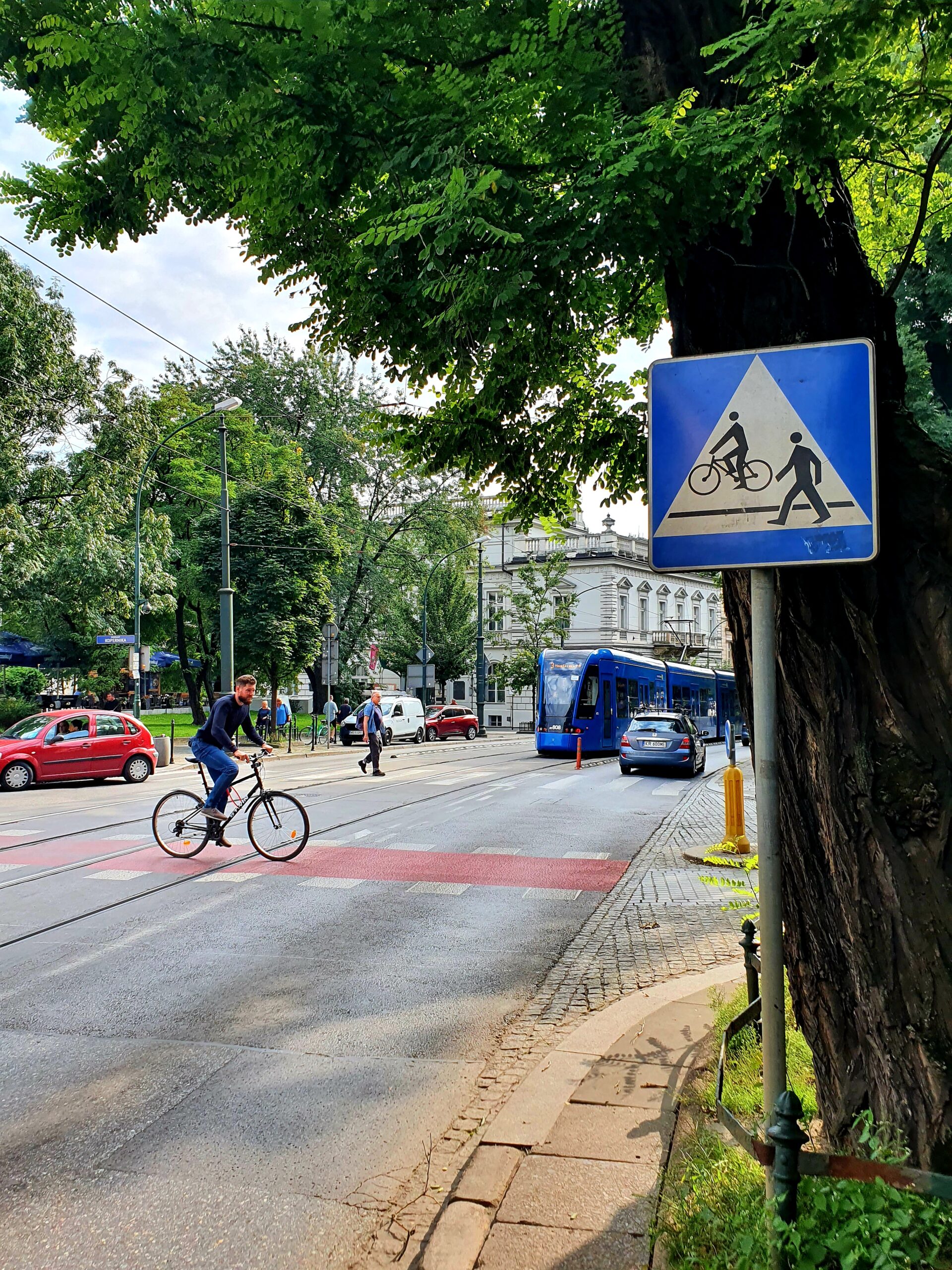
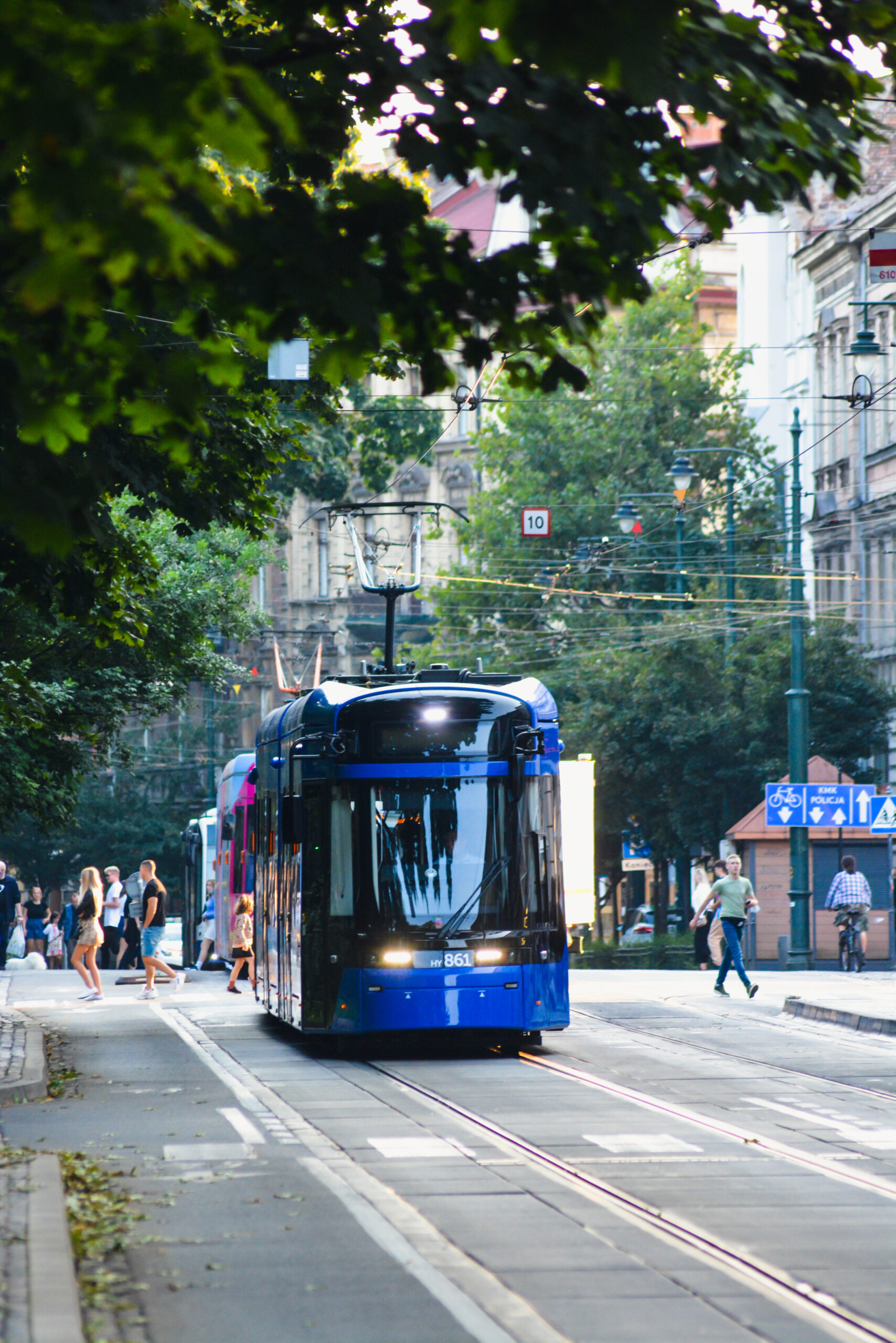
It is a dynamic and intriguing scene, at times almost seeming like an operatic dramatization of progressive sustainable mobility in development and on display right alongside a vigorous and committed car-centric culture.
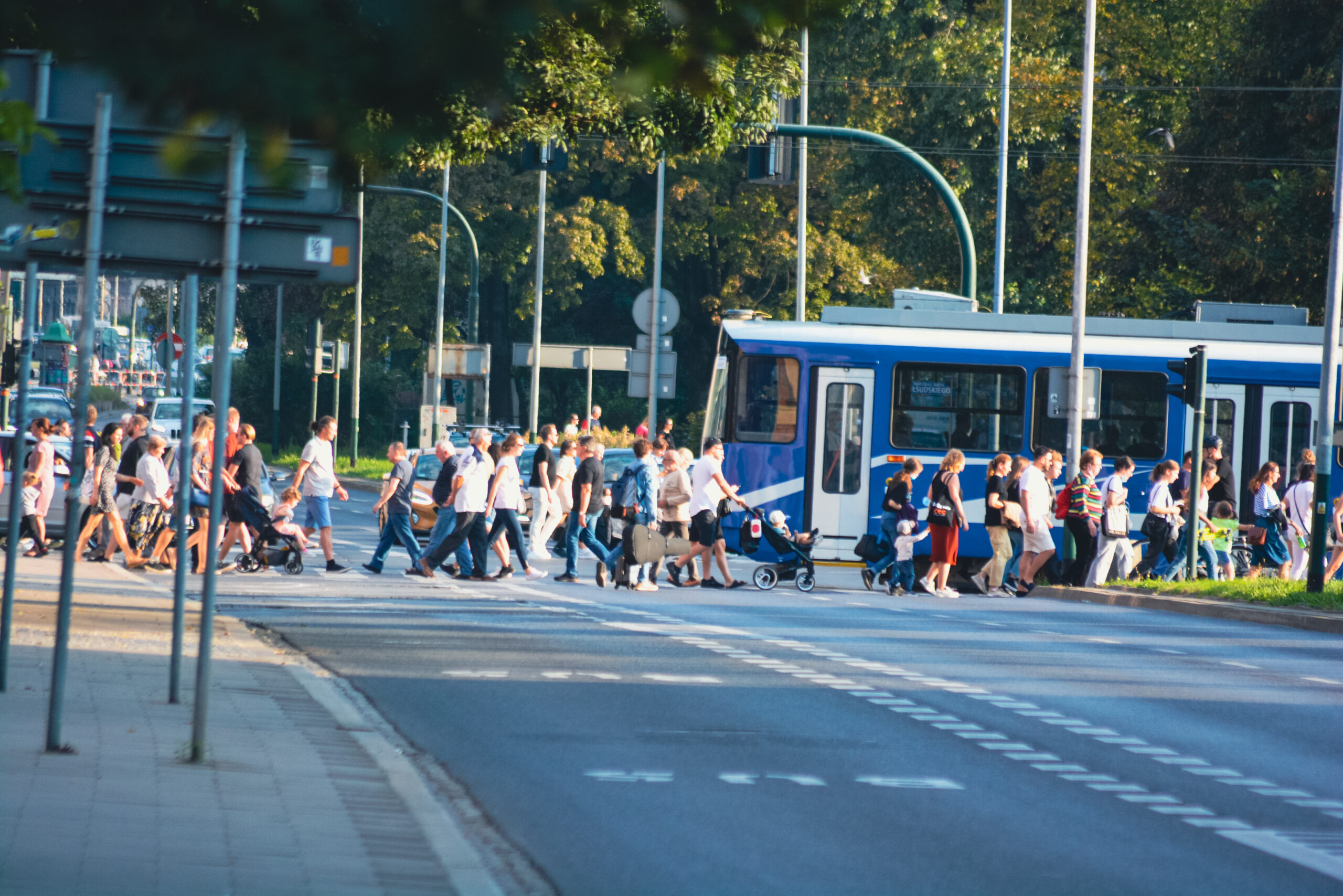
I am definitely ready to roll up my sleeves and learn more including about recent and current efforts to influence the modal shift and increase shares of PT, walking, cycling and other forms of active mobility.
-Annika, Founder & Editor at Pedestrian Space
